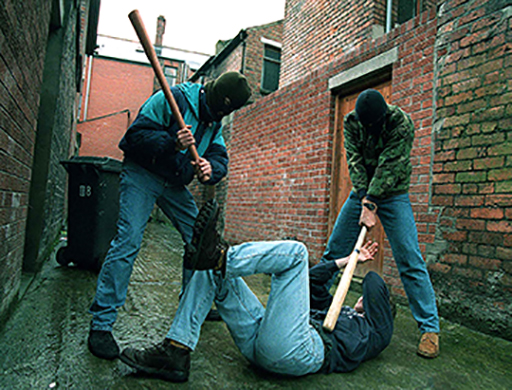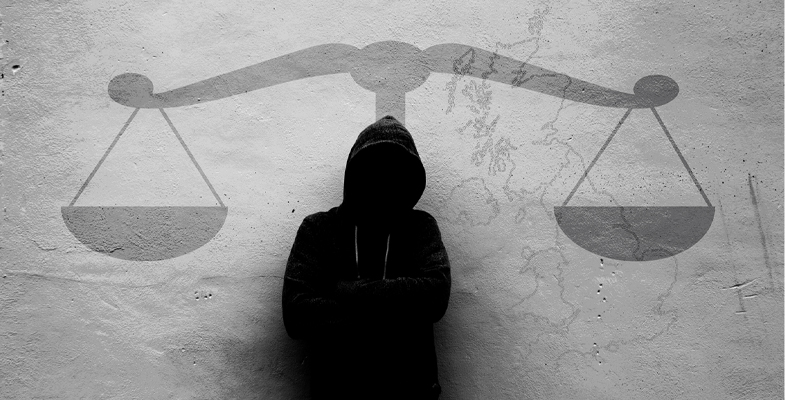2 From rough justice to restorative justice

Mistrust in conventional criminal justice and the strength of sectarian divisions in Northern Ireland resulted in the police being regarded as a central part of the problem rather than part of the solution for much of the twentieth century. The attempt to move on and restore confidence in the administration of justice, and the institutions of criminal justice, has involved bringing restorative justice from the fringes of the system to the centre. In this next activity you will listen to a short account of how this has happened.
Activity 3 The introduction of restorative justice in Northern Ireland
Listen to this extract from the BBC Radio 4 programme Thinking Allowed where two academics discuss how and why restorative justice came to be used in Northern Ireland.
Transcript: Audio 1
SPEAKER 1
Now you looked at, in great detail, a huge number of interviews, in both areas, both communities, at community restorative projects in Northern Ireland after the Good Friday peace agreement of 1998. Now you say that this was a time of continued violence on the streets. This you say is actually, is historically replicated, you do tend to get this after signing an agreement such as the peace agreement.
SPEAKER 2
It is. Just because you sign a piece of paper doesn’t mean that everyone in society moves on instantly to a peaceful democratic co-existence, it takes time. So violence tends to linger and also increase.
SPEAKER 1
And what was going on then? People were working out their own methods of justice on the streets?
SPEAKER 2
It was the only way of doing things and was quite well known from around Northern Ireland, knee-capping it was generally called, quite brutal para-militarial punishments, which these restorative projects were an alternative to.
SPEAKER 1
Because I’ve already indicated, at that time the police were not regarded, well particularly in Catholic communities at least were not regarded as having any legitimacy, and the State wasn’t really intervening. So the para-militaries were exercising their own form of justice on the streets.
SPEAKER 2
Yes absolutely. They filled a vacuum in policing you could argue, and also control over their own communities.
SPEAKER 1
Now let me turn to you Heather, is this description of Northern Ireland in 1998 one that you recognise, you recognise the predicament, the situation that exists then.
SPEAKER 3
Absolutely, I think that Anna has portrayed an extraordinary moment in the history of criminal justice in these Irelands and it’s a time from which we can draw many lessons. It’s very important to understand that the punishment beatings and so on that were taking place at that time were occurring because of the absence of the State and of legitimate authority, and it’s certainly, all credit is due to those communities who when offered the alternative of a restorative approach were prepared to take it up.
SPEAKER 1
But I mean how did you go about this? If you look at a particular community, where para-militiaries were exerting their own sort of form of justice, beatings or whatever they were doing, is it that other people and the para-military say look we can’t go on like this. How do notions of restorative justice, how do notions of bringing people together to resolve disputes without this type of para-military power. How does it occur, how does it start up?
SPEAKER 2
Well in Northern Ireland it occurred from the Republican movement itself, and the very people who had been involved in punishment attacks that were the ones who said we need something different, it’s not working.
Complete the following sentence:
Restorative justice in Northern Ireland was introduced an alternative to…
Discussion
The move out of the war-like conditions that had harmed so many people in Northern Ireland involved slow and painstaking work. In some communities, justice had become synonymous with violence. There were numerous ‘punishment beatings’ sometimes known colloquially as ‘kneecappings’ because the beatings might involve breaking the legs of the alleged perpetrator. The police and criminal justice agencies were regarded in some places as hostile, or indeed foreign, forces. Restorative justice presented a route out of the entrenched practices of the past and offered alternative possibilities that were taken up and developed by many of those involved in the transition to more peaceful conditions.
Now you have looked at the history and principles of restorative justice, and have considered the context of its introduction to Northern Ireland, it’s time to look at how this is applied to the youth justice system. This is the focus of the next section.
